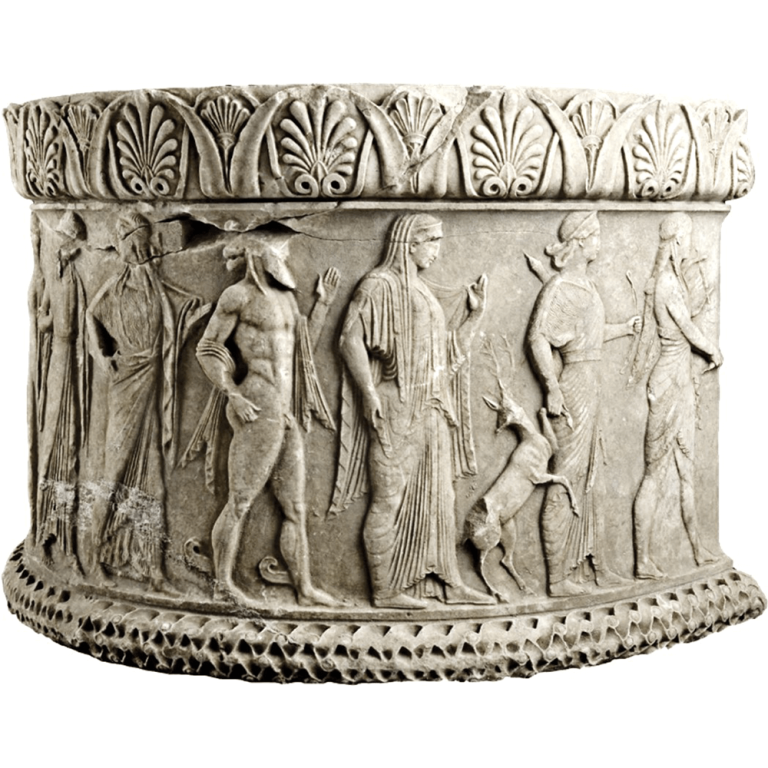Archaic pedestal with a procession of gods and heroes

Archaic pedestal with a procession of gods and heroes
Origin
Nikopoli, Preveza
Period
End of 1st century BC
Material
Marble
Description
Semi-cylindrical archaic pedestal (or altar) with a procession of ten gods and heroes of the Greek pantheon, in two groups. In the first group seven figures move to the right. The Apollonian trio precedes, led by the guitar player Apollo. With the bent left hand he holds his lyre and with the downstretched right, the key. Next is Artemis, who with her outstretched left hand holds the bow and with her right the leg of the stag that accompanies her. Behind her is her mother, Leto. Then Hermes is accompanied by the three Nymphs, holding hands. In the second group three figures move to the left. It is led by Athena, who holds her helmet with her right hand and her spear with her left. Next is Hercules, head turned back. He wears the lion on his head, which partially covers his naked body and is tied around the neck with Heracleian sand. The third form is identified with Hera or Hebe. The show is crowned by a band of nine eleven-leaved hymnals alternating with lotus blossoms, while at its base a complex plafond is formed. The forms are attributed to an archaic style. Imitations of the archaic style or combinations of archaic and classical elements in sculptural works are particularly popular in Augustan times.
